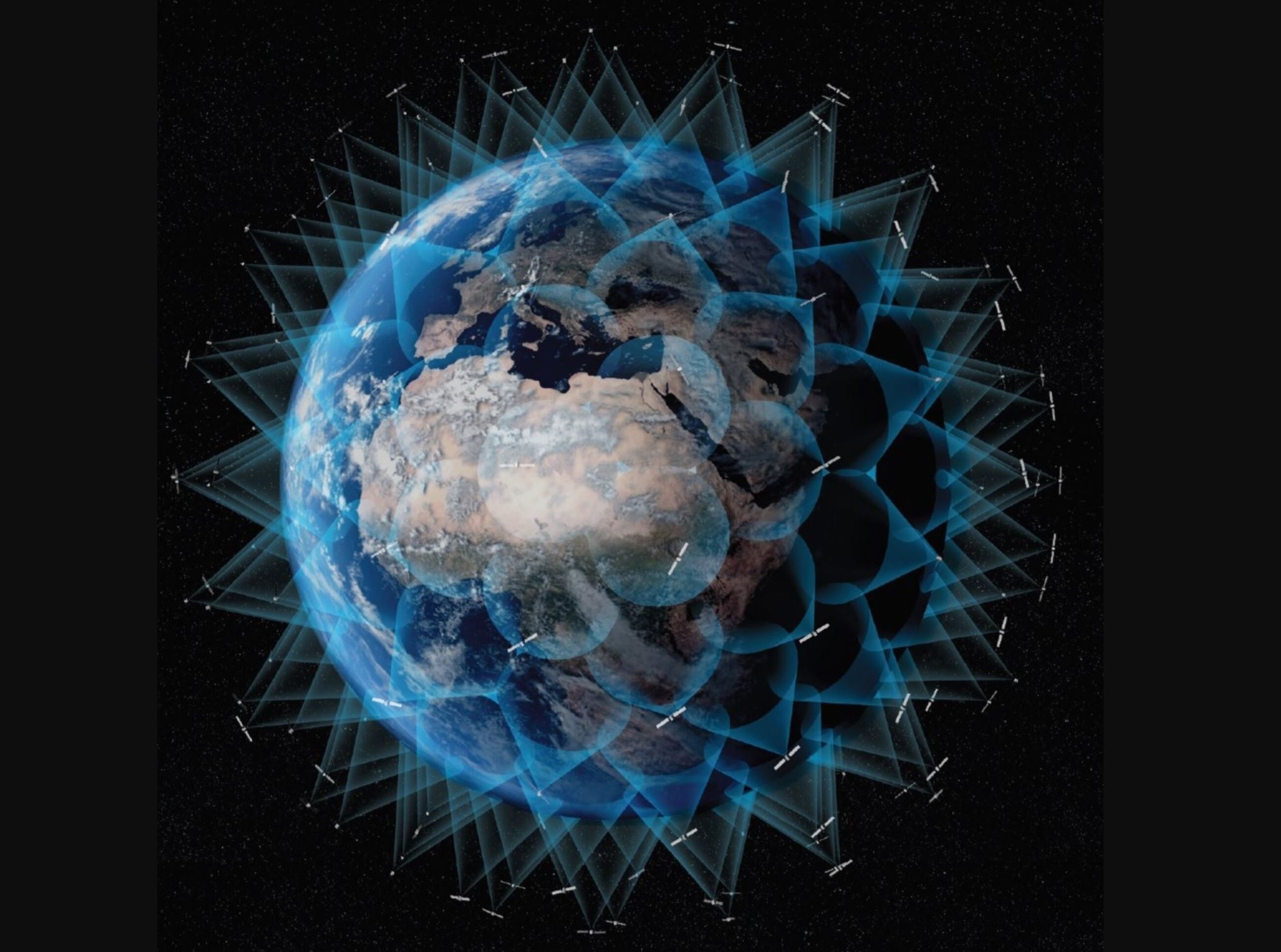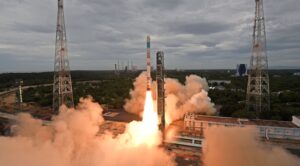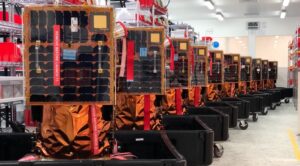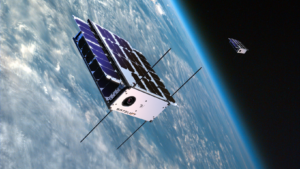
HELSINKI — Shanghai Spacecom Satellite Technology has raised 6.7 billion yuan ($943 million) for the construction of its G60 low Earth orbit megaconstellation.
SSST recently secured the series A funding according to Feb. 1 news reports, citing a major investor. The round was led by a fund set up by the National Manufacturing Transformation and Upgrading Fund (NMTUF), Reuters reported.
Other investors included Shanghai Alliance Investment, a venture capital arm of the Shanghai Municipal Government, CASSTAR, a venture investment and incubator firm ultimately under the Chinese Academy of Sciences (CAS), Guosheng Capital, Hengxu Capital and CAS Capital, also under CAS.
The development comes as SSST prepares to begin construction of its 12,000-satellite strong “G60” constellation. An initial 108 satellites of a total of around 12,000 “G60 Starlink” satellites are to be launched across 2024.
SSST and CAS’s Innovation Academy for Microsatellites (IAMCAS) established Shanghai Gesi Aerospace Technology (Genesat) in 2022 to set up satellite manufacturing facilities.
The first flat-panel satellite rolled off the assembly line at the G60 digital satellite production factory in Shanghai’s Songjiang District in December 2023. Genesat recently raised funds through investment vehicles under both the Chinese Academy of Sciences and Shanghai government.
SSST is understood to be the Chinese side of the former Sino-German KLEO Connect constellation project. That Chinese-European joint venture ended in acrimony and ongoing lawsuits. Meanwhile U.S. technology firm Rivada is planning to use the frequencies previously allocated to KLEO Connect for its own constellation.
Documentation filed with the International Telecommunication Union (ITU) in April likely pertaining to the G60 Starlink project sets out plans for 36 polar orbital planes, each filled with 36 satellites, totaling 1,296 spacecraft. The satellites would operate in the Ku, Q and V bands.
The plans now have very strong financial and political backing. The Shanghai government plans announced in October to foster a commercial space ecosystem by 2025. The initiative aims to foster an end-to-end ecosystem encompassing satellites, launch vehicles, related applications and infrastructure.
Targets include building capacity for an annual output of 50 commercial rockets and 600 commercial satellites.
Chinese constellations and implications
G60 Starlink is the second low Earth orbit communications megaconstellation, following the establishment of the China Satellite Network Group in 2021 to run the national 13,000-satellite Guowang (SatNet) project.
Furthermore, Chinese communications technology corporation Huawei has stated plans to build its own constellation, potentially using optical links, by 2030.
China’s nascent megaconstellation projects promise opportunities for the country’s commercial launch service providers, with a number of startups racing to develop large, reusable liquid propellant launch vehicles.
CAS Space, again under CAS, is aiming to launch its Kinetica-2 rocket in 2025, while Landspace is working on a stainless steel methalox launcher named Zhuque-3. Space Pioneer is targeting June to launch its Falcon 9-class Tianlong-3 rocket.
New commercial launch pads at a commercial spaceport on Hainan island will soon begin hosting launches. These will help ease a bottleneck for launch startups.
The initiative is one of a number to increase China’s overall access to space and allow the construction of megaconstellations. State-owned CASC is also working to increase the launch rate of its Long March 8 to boost overall launch frequency.
The planned communications megaconstellations, together with U.S. projects such as SpaceX’s Starlink, promise enhanced global internet connectivity. These developments also bring geopolitical implications related to national security, surveillance, and technological dominance. They will also heighten issues of orbital space debris and satellite coordination.
- SEO Powered Content & PR Distribution. Get Amplified Today.
- PlatoData.Network Vertical Generative Ai. Empower Yourself. Access Here.
- PlatoAiStream. Web3 Intelligence. Knowledge Amplified. Access Here.
- PlatoESG. Carbon, CleanTech, Energy, Environment, Solar, Waste Management. Access Here.
- PlatoHealth. Biotech and Clinical Trials Intelligence. Access Here.
- Source: https://spacenews.com/shanghai-firm-behind-g60-megaconstellation-raises-943-million/
- :has
- :is
- $UP
- 000
- 1
- 12
- 13
- 2021
- 2022
- 2023
- 2024
- 2025
- 2030
- 36
- 50
- 600
- 7
- a
- Academy
- access
- According
- across
- Aerospace
- again
- Aiming
- aims
- Alliance
- allocated
- allow
- also
- an
- and
- and infrastructure
- announced
- annual
- applications
- April
- ARE
- ARM
- around
- AS
- Assembly
- At
- backing
- BE
- begin
- behind
- Billion
- boost
- both
- bottleneck
- bring
- build
- Building
- by
- Capacity
- capital
- China
- Chinas
- chinese
- citing
- comes
- commercial
- Communications
- Connect
- Connectivity
- construction
- coordination
- CORPORATION
- country’s
- December
- develop
- Development
- developments
- digital
- district
- Dominance
- each
- earth
- ease
- ecosystem
- encompassing
- end-to-end
- ended
- enhanced
- established
- establishment
- facilities
- factory
- falcon
- Feb
- filed
- filled
- financial
- Firm
- following
- For
- Former
- Foster
- Frequency
- fund
- funding
- funds
- geopolitical
- Global
- Government
- Group
- Have
- help
- hosting
- HTTPS
- Huawei
- implications
- in
- include
- included
- Increase
- incubator
- Infrastructure
- initial
- Initiative
- Innovation
- International
- International Telecommunication Union
- Internet
- investment
- investor
- Investors
- issues
- ITS
- joint
- joint venture
- jpg
- june
- large
- launch
- launched
- launches
- Lawsuits
- Led
- likely
- Line
- links
- Liquid
- Long
- Low
- major
- manufacturing
- March
- Meanwhile
- million
- municipal
- Named
- nascent
- National
- national security
- network
- news
- now
- number
- october
- of
- off
- on
- ONE
- ongoing
- operate
- opportunities
- Orbit
- out
- output
- overall
- own
- pertaining
- pioneer
- Planes
- planned
- planning
- plans
- plato
- Plato Data Intelligence
- PlatoData
- polar
- political
- potentially
- Prepares
- previously
- Production
- project
- projects
- promise
- providers
- racing
- raised
- raises
- Rate
- recently
- related
- Reports
- reusable
- Reuters
- rocket
- Rolled
- round
- Run
- s
- satellite
- satellites
- SCIENCES
- Second
- Secured
- security
- Series
- Series A
- Series A funding
- service
- service providers
- set
- Sets
- shanghai
- side
- Soon
- Space
- spacecraft
- Spaceport
- Stainless Steel
- starlink
- Startups
- state-owned
- steel
- strong
- such
- surveillance
- targeting
- technological
- Technology
- telecommunication
- that
- The
- The Initiative
- These
- they
- Through
- to
- together
- Total
- totaling
- Transformation
- u.s.
- Ultimately
- under
- understood
- union
- use
- using
- Vehicles
- venture
- venture capital
- very
- was
- while
- will
- with
- working
- would
- Yuan
- zephyrnet








